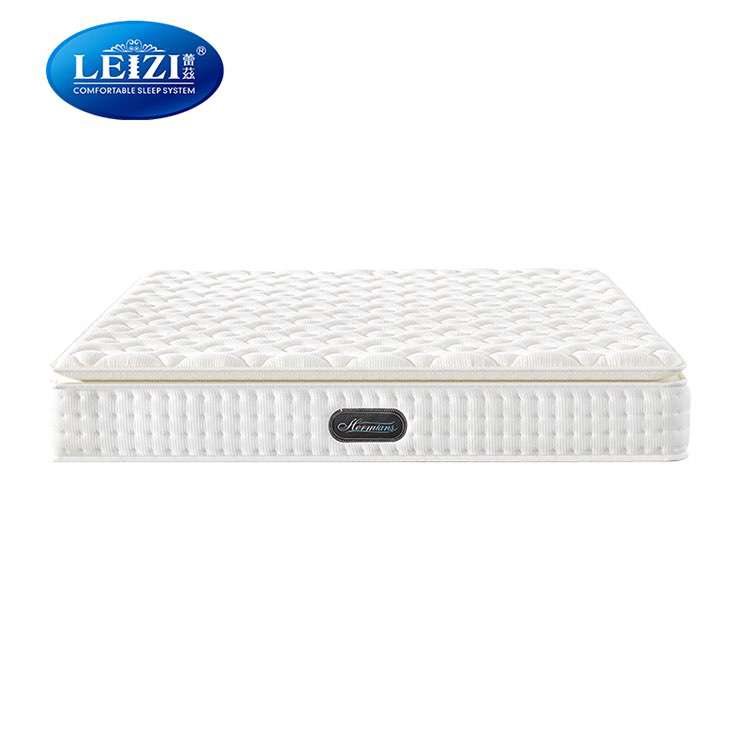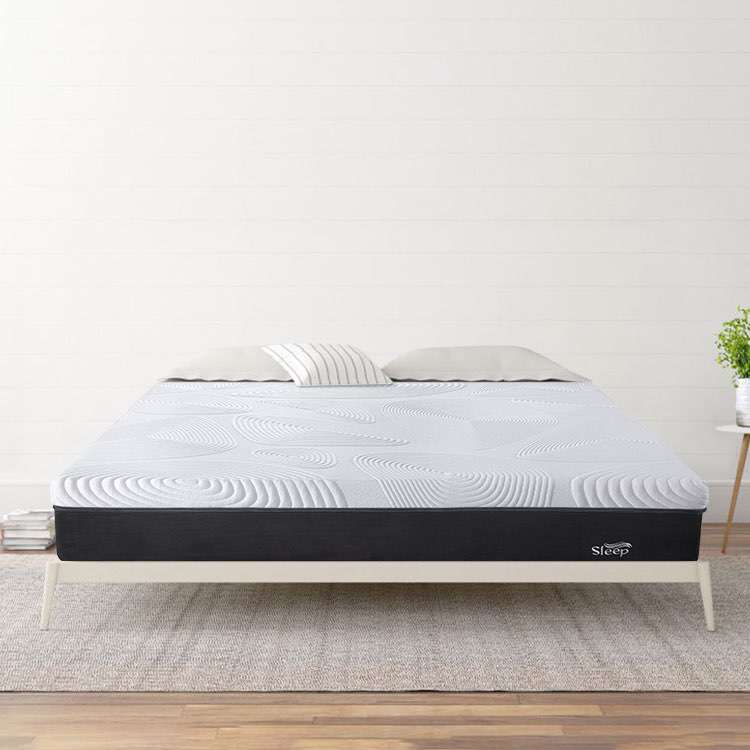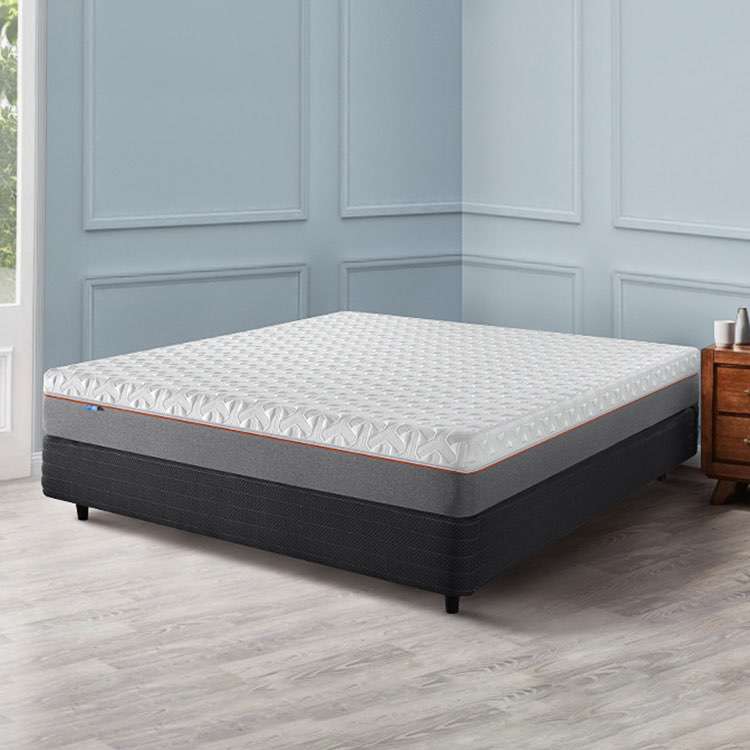A Latex Foam Mattress May Be Better for You Than a Memory Foam Mattress
 Foshan LEIZI Furniture Co., Ltd
Foshan LEIZI Furniture Co., Ltd  October 09,2024
October 09,2024
What is a Latex Foam Mattress?
What is a Memory Foam Mattress?
The Pros and Cons of Latex vs. Memory Foam Mattresses
What is the Difference Between a Latex Foam Mattress and a Memory Foam Mattress?
What Are the Benefits of Latex Foam Mattresses for Back Pain?
How Does a Latex Foam Mattress Affect Your Sleep Quality?
When it comes to choosing the perfect mattress, the decision often boils down to two popular choices: latex foam and memory foam. Each type of mattress has its own unique advantages and disadvantages, so before making a final decision, you need to understand their differences in order to clearly know which mattress you prefer and suitable for. In this article, we will explore the differences between the characteristics of latex foam mattresses and memory foam mattresses, compare their advantages and disadvantages, and help make a better choice of mattress.
What is a Latex Foam Mattress?
Latex foam mattresses are made of natural or synthetic latex, extracted from the SAP of rubber trees or produced through a chemical process. These mattresses are known for their exceptional durability, comfort and support. Latex foam mattresses offer a feel that is both hard and soft, making them a good balance for those seeking softness and support. The elasticity of latex provides a unique sleep experience that is elastic and buoyant, which many people find beneficial for spinal alignment and overall comfort.

What is a Memory Foam Mattress?
Memory foam mattresses are made of viscoelastic foam, a material originally developed by NASA. This type of foam is known for its ability to fit the shape of your body well, and can provide personalized support and stress relief. Memory foam mattresses are popular for their contouring properties and ability to reduce pain at pressure points. Memory foam also distributes heat and pressure evenly across the body, allowing it to adapt to the body characteristics of the sleeper, creating a unique and different sleep experience.
The Pros and Cons of Latex vs. Memory Foam Mattresses
When comparing latex foam mattresses and memory foam mattresses, it is essential to consider the various pros and cons of each type to determine which aligns best with your preferences and needs.
Latex Foam Mattresses Pros:
· Durable: Latex foam mattresses are known for their durability, often more so than memory foam mattresses. Thanks to the resilience of latex, they retain their shape and support for years, making them a wise investment for those seeking long-term comfort.
· Cooler: The natural breathability of latex creates a cool sleeping environment, which is very beneficial for people who tend to overheat at night. Latex promotes air circulation, preventing heat buildup and promoting a cooler night's sleep.
· Well-supported: Latex mattresses provide excellent support and retain their shape and elasticity over time, helping to keep the spine in the correct position. This support is especially useful for people who sleep on their backs or stomachs, as they need a firmer mattress to keep the spine in the correct position.
· Anti-allergy: Latex naturally repels dust mites and other common allergens, making it ideal for allergy sufferers. The hypoallergenic nature of latex foam mattresses helps to reduce allergy symptoms and create a healthier sleeping environment.
· More environmentally friendly and comfortable: Natural latex is biodegradable and is an environmentally friendly alternative to synthetic materials. Choosing a latex foam mattress helps protect the environment while providing a comfortable, supportive sleep environment.
Latex Foam Mattresses Cons:
Expensive: Latex foam mattresses tend to be more costly due to the quality of materials used.
Limited hardness options: They may not provide as wide a range of firmness levels as memory foam mattresses.
Heavier: Latex mattresses can be quite heavy, making them more challenging to move and handle.
Memory Foam Mattresses Pros:
Fits the shape of the body: Memory foam contours closely to your body, providing personalized support and pressure relief.
Wide hardness range: Available in a variety of firmness levels, catering to different sleep preferences.
Cheaper price: Generally more affordable than latex foam mattresses.
Innovative: Memory foam's advancements in sleep technology have democratized comfort and support.
Memory Foam Mattresses Cons:
· Non-radiating: Memory foam has warming properties that create a warmer sleeping environment. The warming properties of memory foam may be uncomfortable for people who are hot or live in hot climates.
· Chemical smell: New memory foam mattresses usually give off a characteristic chemical odor called off-gassing. This odor typically disappears over time, but people who are sensitive to odors may experience discomfort.
· Poor durability: Over time, memory foam loses its shape and support, leading to sagging and reduced sleep comfort. Aging memory foam causes the sleep surface to lose support and needs to be replaced more frequently than a latex mattress.

What is the Difference Between a Latex Foam Mattress and a Memory Foam Mattress?
Several key differences set latex foam mattresses apart from memory foam mattresses. Understanding these distinctions can help you decide which type is better suited to your needs.
Sense of Sleep: Latex foam provides a buoyant, responsive feel, while memory foam offers a more enveloping sensation, contouring closely to the body.
Support: Both types of mattresses provide good support, but latex foam maintains its shape and firmness better over time.
Decompression: Memory foam excels at pressure relief, particularly for those with joint pain, whereas latex offers balanced support and pressure distribution.
Body Type of Sleeper: Latex foam is generally preferred by back and stomach sleepers for its firm support, while memory foam is favored by side sleepers for its contouring properties.
Temperature Control: Latex foam's natural breathability helps regulate temperature, making it cooler to sleep on compared to memory foam, which can retain heat.
Innovative Impact: Memory foam technology has made high-quality sleep more accessible to a broader audience.
What Are the Benefits of Latex Foam Mattresses for Back Pain?
Latex foam mattresses are especially beneficial for those with back pain. The supportive force of the strong latex helps to keep the body's spine aligned and can reduce the risk of developing or worsening back pain. In addition, the responsiveness of latex foam ensures that it conforms to your body's natural curve, providing targeted support to reduce pressure points and minimize discomfort. The elasticity of latex also helps distribute body weight evenly, preventing pressure from building up in specific areas that can cause pain.
How Does a Latex Foam Mattress Affect Your Sleep Quality?
Sleeping on a latex foam mattress can significantly enhance your sleep quality through various means:
Equilibrium Body Temperature: The natural breathability of latex helps regulate your body temperature, preventing overheating and ensuring a comfortable sleep environment.
Stress Reduction and Mental Health: The supportive and pressure-relieving properties of latex foam can reduce physical stress on your body, leading to improved mental well-being and reduced stress levels.
Improve Sleep Cycle: By providing consistent support and reducing discomfort, a latex foam mattress can help you achieve deeper, more restorative sleep cycles, leading to overall better sleep quality.

Conclusion
Latex foam mattresses and memory foam mattresses each have their own advantages and disadvantages, but latex foam mattresses may be the best choice for those looking for a long-lasting, supportive and refreshing sleep environment. Ultimately, however, the decision comes down to personal preference and specific needs. Whether you choose a latex mattress or a memory foam mattress, in order to ensure that a latex foam mattress provides luxurious and comfortable sleeping conditions, mattress manufacturers are fully equipped to cut, sew, fill, store, edge, pack and test the mattresses using the best materials and technical methods. Combination. Investing in a high-quality mattress is essential for a good night's sleep and overall health, and the benefits are subtle.
FAQ
Q1: What makes latex foam mattresses more durable than memory foam mattresses?
A1: Latex foam mattresses are renowned for their exceptional durability because the latex material is naturally resilient and maintains its shape and firmness over time. Unlike memory foam, which can break down and sag, latex foam retains its supportive qualities for many years, making it a long-lasting investment for quality sleep.
Q2: Are latex foam mattresses suitable for people with allergies?
A2: Yes, latex foam mattresses are an excellent choice for allergy sufferers. Natural latex is inherently resistant to dust mites, mold, and other common allergens. This hypoallergenic property helps create a healthier sleeping environment, reducing the risk of allergic reactions and promoting better overall health.
Q3: How does a latex foam mattress help regulate body temperature during sleep?
A3: Latex foam mattresses are naturally breathable due to their open-cell structure, which allows for better air circulation. This breathability helps to dissipate body heat and moisture, maintaining a cooler sleeping environment. This temperature regulation can be particularly beneficial for individuals who tend to overheat at night, ensuring a more comfortable and uninterrupted sleep.












